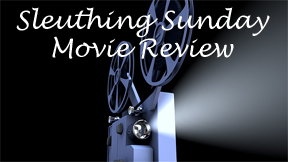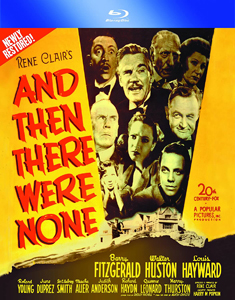The 1945 movie adaptation of “And Then There Were None” by director Rene Clair and writer Dudley Nichols shows how the piece can play well on a stage. It starts weak, gradually becomes intriguing and finishes strong – even though Nichols changes the 1939 book’s seemingly more cinematic ending to something house-bound.
Solid structure
A lot of the film’s strengths nonetheless come from Agatha Christie’s structure. In a closed-island mystery, 10 people get whittled down until, well, there are none. They gradually realize what’s going on, first thinking U.N. Owen (who invited them all via letters) is lurking on the island.
After a search of the house and the small tract of rock, they realize “Owen” is not hiding, so he’s therefore one of them. This structure has perhaps influenced every desolate-location, mistrust-based horror film and TV series since, from “The Thing” to the recent “Slasher” Season 4.

“And Then There Were None” (1945)
Director: René Clair
Writers: Dudley Nichols (screenplay), Agatha Christie (novel)
Stars: Barry Fitzgerald, Walter Huston, Louis Hayward
“ATTWN’s” missing piece is a cinematic sense of the island. Outdoor scenes play out against matte paintings or rear projection. This is a shame because an isolated island is an archetypally great concept. But I warmed to the characters a little, and to the mystery a lot. (It had been long enough since my novel read that I forgot whodunit.)
Also befitting Christie, the characters are broad and distinct, and there’s some comedy. But not in the manner of the novel. Christie is subtle and sneaky. Clair and Nichols are uneven with their comedy doses – and broad when they do choose to go for a laugh.
For instance, butler Rogers (Thomas Haydn) gets drunk, grabs an umbrella to go to the woodshed and throws down his glass, which breaks. It’s a well-acted bit of physical comedy, but not Christie’s style. (Earlier, in something that is Christie’s style, Rogers’ wife faints simply upon learning of their situation. It’s unintentionally funny to see that cliché play out.)
After two deaths (and the associated broken Indian statuettes on the dining-room table), the survivors realize it’s “murder.” When that word is first spoken it’s punctuated by lightning. A young Mel Brooks was perhaps taking notes.
A rather dreary island
Yet “ATTWN’s” tone is mostly dreary. Even though the house has electricity (until it goes out), it is big and drafty. This island isn’t one where you’d want to suntan on the beach. It seems vaguely like the offseason.
The characters are unlikable because of their (supposed) past actions, which matches with the novel; all apparently killed someone and got away with it. They are also initially unsympathetic in their present behaviors.
But they grew on me. The doctor (Walter Huston, with mannerisms that we’d later see in Lloyd Bridges) and the judge (Barry Fitzgerald) form an amusing friendship even amid a house full of distrust.

The distrust plays out in intriguing mathematical fashion. When a person is alone, they are safe. When they are with at least two other people, they are safe. When they are with one other person, suspicions flare.
Nichols further teases the theme of trust through Lombard (Louis Hayward) and Vera (June Duprez), the old-Hollywood suave man and porcelain lady who could cinematically kiss as “The End” comes on the screen if the film chooses to go that way.
“And Then There Were None” is a compelling early curiosity showing how Christie’s writing can meld with the cinematic tactics of the day. But mostly, it’s a guide for how to do it on the stage.
Every week, Sleuthing Sunday reviews an Agatha Christie book or adaptation. Click here to visit our Agatha Christie Zone.

